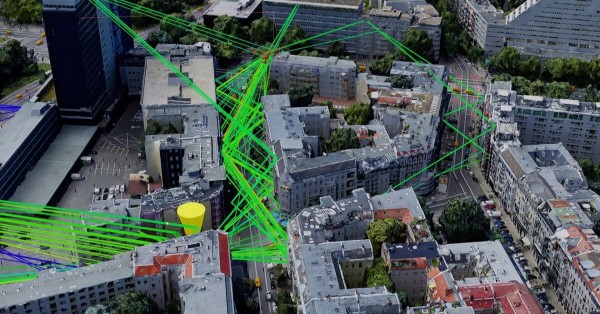Abstract 6G Networks
The emergence of 6G networks marks a paradigm shift in the way wireless systems are conceived and managed. Unlike its predecessors, 6G will embed Artificial Intelligence (AI) as a native capability across all network layers, enabling real-time adaptability, intelligent orchestration, and autonomous decision-making. This paper explores the symbiosis between AI and 6G, highlighting key applications such as predictive analytics, alarm correlation, and edge-native intelligence. Detailed insights into AI model selection and architecture are provided to bridge the current technical gap. Finally, the cultural and organizational changes required to realize AI-driven 6G networks are discussed. A graphical abstract is suggested to visually summarize the proposed architecture.
INTRODUCTION
6G is more than an evolution of wireless speeds; it signifies the convergence of data-driven intelligence with next-generation connectivity. While 5G laid the foundation for enhanced mobile broadband and ultra-reliable communications, 6G introduces AI as a foundational component to manage complexity, ensure ultra-low latency, and deliver context-aware services.
ARCHITECTURE OF AI-ENABLED 6G NETWORKS
In 6G, AI will be deeply integrated into network architecture. Traditional centralized intelligence models will give way to distributed, edge-native AI to enable ultra-low latency and context-aware adaptability.
Predictive Analytics in Wireless Environments
Predictive analytics will form the backbone of network reliability and resource optimization. Machine learning models such as Long Short-Term Memory (LSTM) networks, Random Forest Regression, and Gradient Boosting Machines can be used to forecast network behavior based on historical and real-time KPIs like latency, packet loss, and signal strength.
Example Use Case: In a smart port powered by private 6G, autonomous cranes require stable low-latency communication. An LSTM-based model can predict latency spikes based on weather, time of day, and traffic patterns, allowing the network to preemptively reroute traffic and avoid service degradation.
AI-Based Alarm Correlation in Open RAN
The rise of multi-vendor Open RAN ecosystems has led to a surge in system alarms. Traditional rule-based correlation engines are insufficient to handle the complexity and volume. AI models, particularly clustering algorithms like DBSCAN or supervised classifiers like Support Vector Machines (SVMs), can be trained to:
– Cluster related alarms
– Identify root cause vs. symptomatic alarms
– Recommend corrective actions
By reducing alarm noise by up to 80%, operators can lower Mean Time to Resolution (MTTR) and operational costs.
EDGE-NATIVE INTELLIGENCE AND ENERGY OPTIMIZATION
Latency-sensitive applications like augmented reality (AR), remote surgery, and industrial automation demand immediate decision-making. Embedding AI models at the network edge reduces reliance on centralized processing and supports hyperlocal decision-making.
AI techniques such as federated learning allow edge devices to train models collaboratively without centralized data sharing, maintaining privacy while enhancing decision quality.
Moreover, AI can optimize energy usage by:
– Predicting low-traffic periods and dynamically shutting down idle network resources
– Managing RF energy patterns to minimize wastage
– Shifting workloads to energy-efficient nodes based on real-time analytics
This approach aligns with sustainability goals by reducing carbon footprints and operational expenditures.
PROPOSED SYSTEM ARCHITECTURE
The proposed AI-driven 6G network architecture includes the following layers:
– Device Layer: IoT devices, sensors, user equipment
– Edge Intelligence Layer: Local AI inference, federated learning nodes
– Core Intelligence Layer: Centralized AI models for broader network orchestration
– Service Management Layer: SLA management, alarm correlation, predictive analytics dashboard
All layers interact via secure APIs and continuously feed back data for model retraining and performance improvement.
GRAPHICAL ABSTRACT
– Center: AI Engine (Orchestration & Intelligence)
– Surrounding Nodes:
– Predictive Analytics (e.g., network health forecasting)
– Alarm Correlation (e.g., root cause analysis)
– Edge AI (e.g., real-time AR decision-making)
– Energy Optimization (e.g., dynamic resource scaling)
– Layers (bottom to top): Devices → Edge → Core → Services
CONCLUSION
The complexity of 6G networks mandates intelligence that can adapt in real time. AI provides the tools necessary to build self-sustaining, energy-efficient, and highly responsive networks. By embedding AI across all layers, from the device edge to the core network, the telecom industry can unlock unprecedented levels of performance and service personalization. Standardization bodies and industry alliances must now collaborate to define frameworks, best practices, and interoperability standards to fully realize the potential of AI-powered 6G ecosystems.
REFERENCES
[1] S. Rai, “Why TIP MUST Compliance is a Key Driver of Open RAN Success,” Fujitsu Network Blog, 2023.
[2] M. Peng, Y. Li, Z. Zhao, and C. Wang, “System architecture and key technologies for 5G heterogeneous cloud radio access networks,” IEEE Network, vol. 29, no. 2, pp. 6–14, Mar./Apr. 2015.
[3] G. Fettweis, “The Tactile Internet: Applications and Challenges,” IEEE Vehicular Technology Magazine, vol. 9, no. 1, pp. 64–70, Mar. 2014.



















